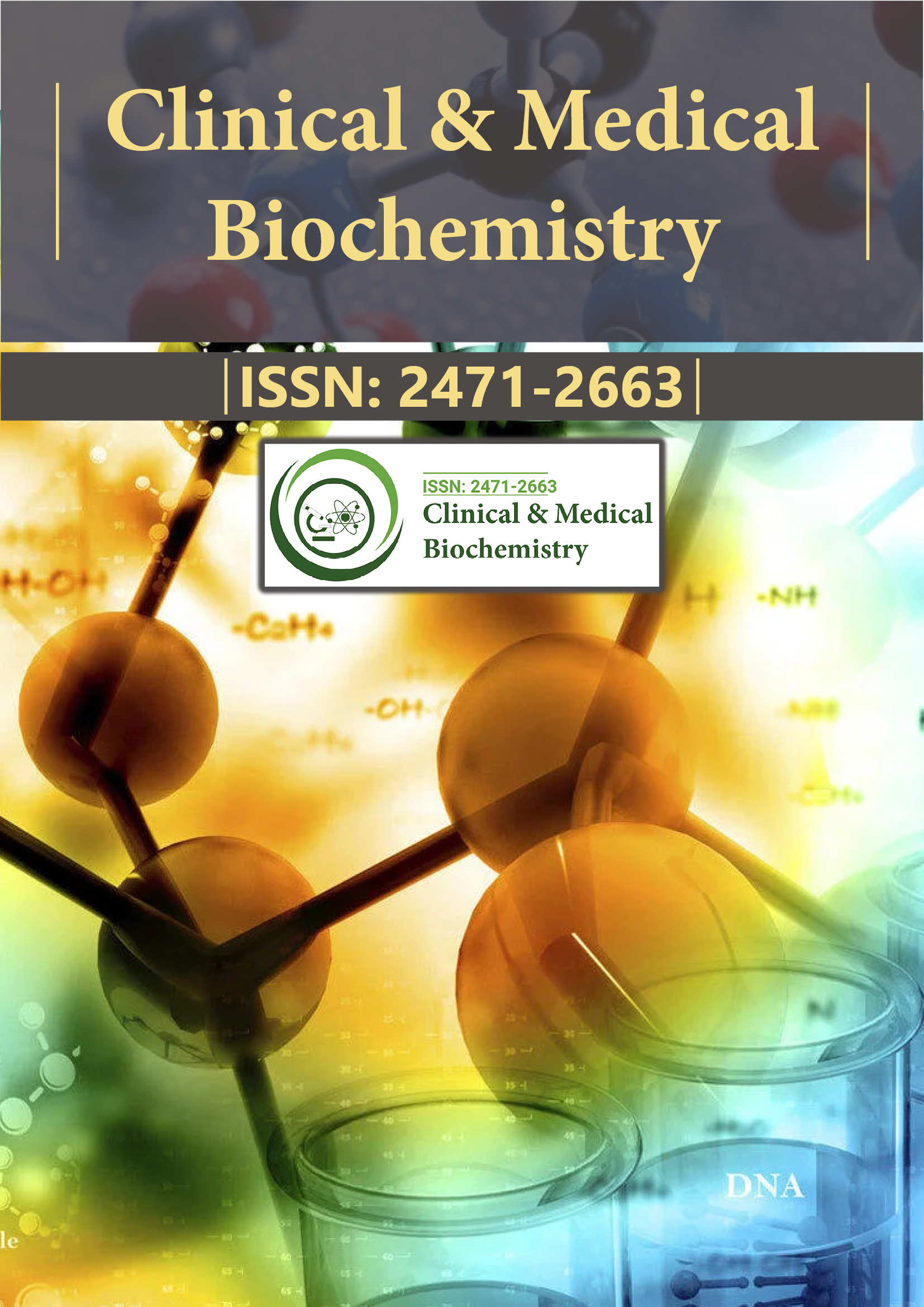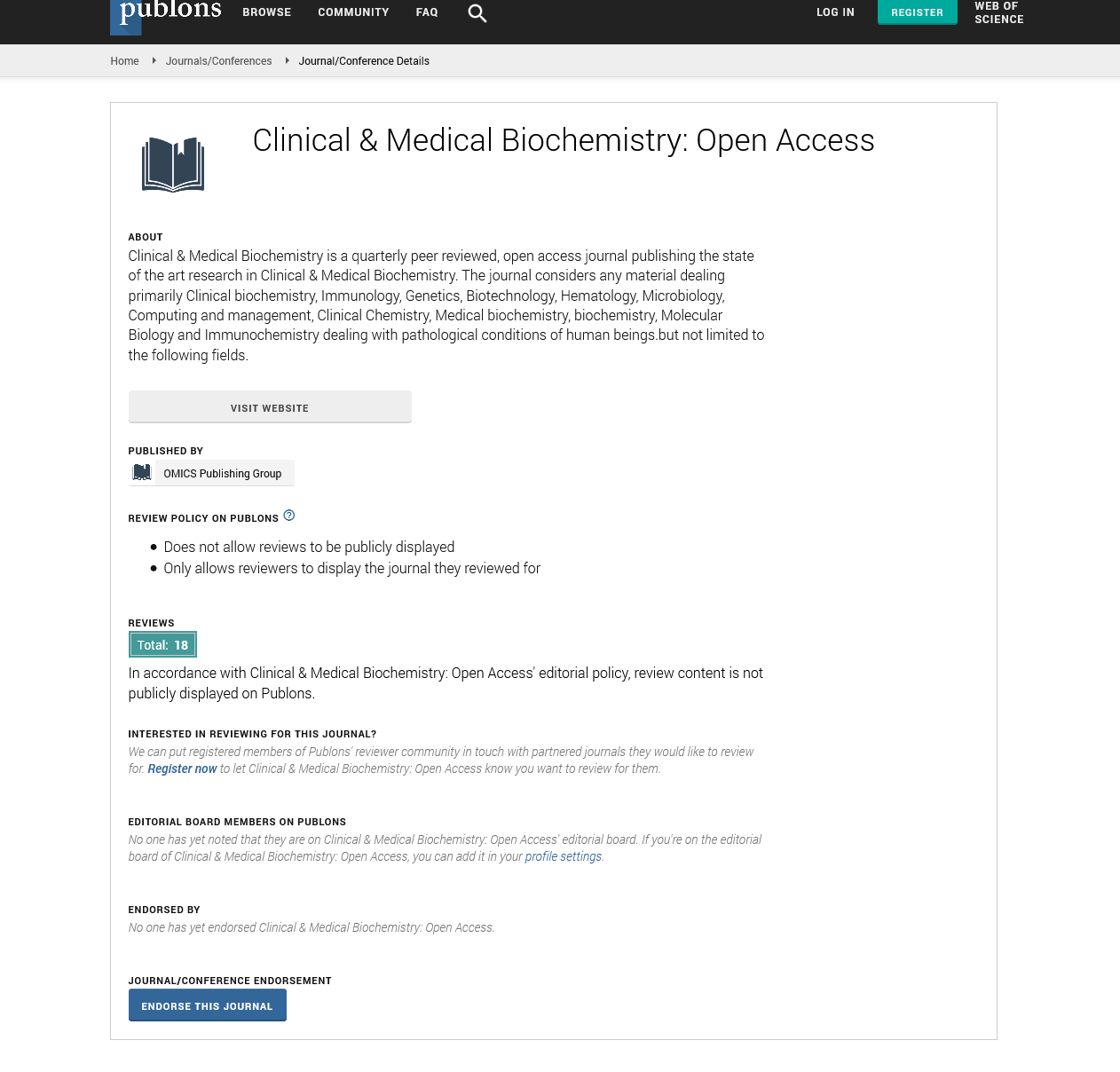Indexed In
- RefSeek
- Directory of Research Journal Indexing (DRJI)
- Hamdard University
- EBSCO A-Z
- OCLC- WorldCat
- Scholarsteer
- Publons
- Euro Pub
- Google Scholar
Useful Links
Share This Page
Journal Flyer

Open Access Journals
- Agri and Aquaculture
- Biochemistry
- Bioinformatics & Systems Biology
- Business & Management
- Chemistry
- Clinical Sciences
- Engineering
- Food & Nutrition
- General Science
- Genetics & Molecular Biology
- Immunology & Microbiology
- Medical Sciences
- Neuroscience & Psychology
- Nursing & Health Care
- Pharmaceutical Sciences
Short Communication - (2022) Volume 8, Issue 6
Laboratory Diagnosis and Pathophysiology of Acute Pancreatitis
James Nathen*Received: 17-Oct-2022, Manuscript No. CMBO-22-18985; Editor assigned: 20-Oct-2022, Pre QC No. CMBO-22-18985 (PQ); Reviewed: 09-Nov-2022, QC No. CMBO-22-18985; Revised: 18-Nov-2022, Manuscript No. CMBO-22-18985 (R); Published: 28-Nov-2022, DOI: 10.35841/2471-2663.22.8.137
Description
Acute pancreatitis is a pancreatic inflammatory disorder that can be treated. Although the illness process might affect the pancreatic tissue, it may also affect other organ sites or peripancreatic tissues. Acute pancreatitis can occur suddenly or return back repeatedly. There are many different causes for it, and its severity can range from minor to severe and even lifethreatening [1]. While some patients may just need a quick hospital visit, others may be in dire need of intensive care due to multiple organ malfunctions. The fatality rate for mild acute pancreatitis is extremely low (less than 1%). However, the mortality rate for severe acute pancreatitis can range from 10% to 30%, depending on whether it is infectious or sterile necrosis.
Despite the absence of pharmacologic treatment for AP, mortality continues to decline, most likely as a result of improved care of AP-related problems, increasing ICU access, and the management of organ failure in patients with severe AP. According to the latest Atlanta classification, AP severity is determined [2]. Acute inflammation without necrosis or it is commonly referred to as mild AP, which is normally self-limited and resolves within a week. While only persistent of (> 48 hours) qualifies as severe AP, moderate AP is classified as the presence of pancreatic necrosis and/or transient of (48 hours).
The laboratory diagnosis has depended on measuring released active digestive enzymes in circulation (as pancreatic specific as possible), their precursors, or inactive residues released after the enzymes' activation. The identification of inflammatory markers has been used to gauge the severity of the condition. Because of the easy, quick, and automated assay methods, measuring amylase and lipase activity has become very common in clinical practice. Young male patients are more likely to have alcoholic acute pancreatitis and hypertriglyceridemia, whereas older patients are more likely to have biliary origins. Medication, Endoscopic Retrograde Cholangiopancreatography (ERCP), genetics, trauma, etc. The prognosis of AP is improved and recurrence is prevented by early diagnosis and causative treatment.
Diagnostic tests
Serum amylase and lipase levels typically peak within hours after symptom onset and return to normal within 3-5 days after the onset of AP [3]. Levels of both markers can also return to normal very quickly, indicating either resolution of the disease or common destruction of the pancreas due to cessation of pancreatic amylase and lipase production.
C-Reactive Protein (CRP) is currently the best test single serum marker for distinguishing between severe and mild AP. The problem of AP severity grading has led to the initiation of many multifactorial grading systems [4].
Trypsin is one of the digestive enzymes secreted by the pancreas and stored as an inactivated precursor in the enzyme-producing pellet. Under normal conditions, pancreatic acinar cells can adequately inhibit trypsin activity [5]. In pancreatitis, various proteases (particularly trypsin) are over activated, ultimately leading to cell damage. Trypsin is also one of the biomarkers of pancreatitis.
Conclusion
AP is a common gastrointestinal disease that can be lifethreatening in severe cases. Even for those who survive, chronic pancreatitis and diabetes can reduce their condition of life for long periods of time. Every year, it puts a significant strain on the healthcare system. The prognosis of the condition is greatly influenced by early diagnosis and efficient therapy. New techniques for the diagnosis and treatment of AP have been made available and rapid development of nanotechnology. Acute pancreatitis' precise pathogenesis has been unclear, with the exception of the possibility that it is an autoimmune digestive disease. Numerous essential pathophysiological pathways have been identified through extensive research using animal models that may serve as therapeutic targets.
References
- Gorelick FS, Lerch MM. Do animal models of acute pancreatitis reproduce human disease? Cell Mol Gastroenterol Hepatol. 2017;4:251–262.
[Crossref] [Google Scholar] [PubMed]
- Moggia E, Koti R, Belgaumkar AP, Fazio F, Pereira SP, Davidson BR, et al. Pharmacological interventions for acute pancreatitis. Cochrane Database Syst Rev. 2017;4:CD011384.
[Crossref] [Google Scholar] [PubMed]
- Yadav D, Lowenfels AB. The epidemiology of pancreatitis and pancreatic cancer. Gastroenterology. 2013: 144(6):1252-1261.
[CrossRef] [Google Scholar] [PubMed]
- Lodewijkx PJ, Besselink MG, Witteman BJ, Schepers NJ, Gooszen HG, van Santvoort HC, et al. Nutrition in acute pancreatitis: a critical review. Expert Rev Gastroenterol Hepatol. 2016; 10(5):571-80.
[CrossRef] [Google Scholar] [PubMed]
- Russo MW, Wei JT, Thiny MT, Gangarosa LM, Brown A, Ringel Y, et al. Digestive and liver diseases statistics, 2004. Gastroenterology. 2004;126(5):1448-1453.
[Crossref] [Google scholar] [PubMed]
Citation: Nathen J (2022) Laboratory Diagnosis and Pathophysiology of Acute Pancreatitis. Clin Med Bio Chem. 8:137.
Copyright: © 2022 Nathen J. This is an open-access article distributed under the terms of the Creative Commons Attribution License, which permits unrestricted use, distribution, and reproduction in any medium, provided the original author and source are credited.

